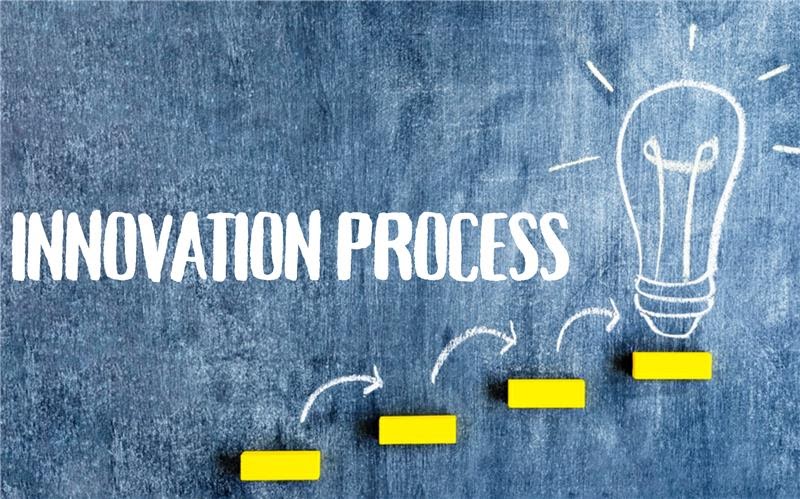The Role of Innovation Strategy in the Tech Industry
Innovation strategy plays a pivotal role in the fast-paced and ever-evolving landscape of the tech industry. It serves as a roadmap for organizations to navigate the complexities of the market, anticipate trends, and develop groundbreaking solutions. By leveraging innovation strategy, companies can gain a competitive edge, drive growth, and ensure long-term success.
Table of Contents
Defining Innovation Strategy: A Holistic Approach
Innovation strategy refers to a comprehensive plan that outlines how an organization intends to foster and capitalize on innovation. It involves identifying opportunities, setting goals, allocating resources, and implementing initiatives to drive innovation across various business functions. By adopting a holistic approach to innovation strategy, companies can align their efforts with their overall business objectives and create a culture that encourages creativity, experimentation, and collaboration.
Identifying Market Trends and Customer Needs
A key aspect of innovation strategy is identifying market trends and understanding customer needs. By conducting thorough market research and leveraging data analytics, companies can gain insights into emerging technologies, changing consumer preferences, and industry disruptions. This knowledge allows organizations to proactively develop innovative products, services, and business models that address evolving market demands and create value for customers.
Fostering a Culture of Innovation
To master innovation strategy, organizations must foster a culture of innovation. This entails creating an environment that encourages employees to think creatively, take risks, and embrace continuous learning. By promoting open communication, providing resources for experimentation, and recognizing and rewarding innovative ideas, companies can cultivate a workforce that actively contributes to the innovation process. In turn, this fuels the generation of groundbreaking solutions and enhances the organization’s ability to stay ahead in the tech industry.
Collaboration and Partnerships: Amplifying Innovation Potential
Collaboration and partnerships play a crucial role in maximizing innovation potential in the tech industry. By engaging with external stakeholders, such as startups, universities, research institutions, and industry experts, companies can tap into diverse perspectives, expertise, and resources. Collaborative efforts can lead to the exchange of ideas, joint research and development projects, and the creation of mutually beneficial innovation ecosystems. These partnerships can accelerate the pace of innovation, increase market reach, and foster a culture of knowledge-sharing and collaboration within the organization.
Agile Innovation: Embracing Change and Adaptability
Innovation strategy in the tech industry necessitates an agile approach that embraces change and adaptability. Given the rapid pace of technological advancements and evolving market dynamics, organizations must be flexible and responsive to new opportunities and challenges. This involves embracing iterative processes, experimenting with new technologies and business models, and quickly adapting strategies based on market feedback. By being agile, companies can seize emerging trends, overcome obstacles, and maintain a competitive advantage in the ever-changing tech landscape.
Harnessing Data and Technology for Innovation
Data and technology are powerful enablers of innovation in the tech industry. By leveraging big data analytics, machine learning, artificial intelligence, and other advanced technologies, companies can gain valuable insights, automate processes, and identify patterns and opportunities that may have otherwise been overlooked. By harnessing the power of data and technology, organizations can make data-driven decisions, optimize operations, and develop innovative solutions that meet customer needs and drive business growth.
Balancing Short-Term and Long-Term Innovation
Effective innovation strategy in the tech industry requires a delicate balance between short-term and long-term innovation. While short-term innovation focuses on immediate market needs and incremental improvements, long-term innovation entails exploring new horizons, disruptive technologies, and transformative ideas. By striking a balance between these two approaches, organizations can ensure continuous innovation, maintain market relevance, and secure their position as industry leaders.
Embracing a Risk-Tolerant Mindset
Innovation inherently involves risks, and organizations must embrace a risk-tolerant mindset to master innovation strategy in the tech industry. Encouraging calculated risk-taking, learning from failures, and creating a safe environment for experimentation are essential elements of a successful innovation culture. By viewing failures as learning opportunities and encouraging teams to iterate and improve, companies can foster a culture that embraces innovation, encourages bold ideas, and drives breakthroughs.
Measuring and Evaluating Innovation Success
To effectively master innovation strategy, organizations must establish key performance indicators (KPIs) to measure and evaluate innovation success. Metrics such as the number of new product launches, revenue generated from innovative products, customer satisfaction ratings, and employee engagement can provide valuable insights into the effectiveness of the innovation strategy. By regularly assessing and analyzing these metrics, companies can identify areas for improvement, refine their innovation processes, and continually enhance their ability to drive innovation in the tech industry.
Conclusion
Innovation strategy is a crucial driver of success in the tech industry. By embracing a holistic approach, identifying market trends and customer needs, fostering a culture of innovation, and leveraging collaborations and partnerships, organizations can maximize their innovation potential. Additionally, adopting an agile mindset, harnessing data and technology, balancing short-term and long-term innovation, and embracing a risk-tolerant culture contribute to mastering innovation strategy. By measuring and evaluating innovation success through relevant KPIs, companies can continually refine their approach and ensure sustained growth and competitiveness in the dynamic tech industry.
Learn about: Embrace the future of education. Discover innovative new technology for students and revolutionize your learning experience today!

